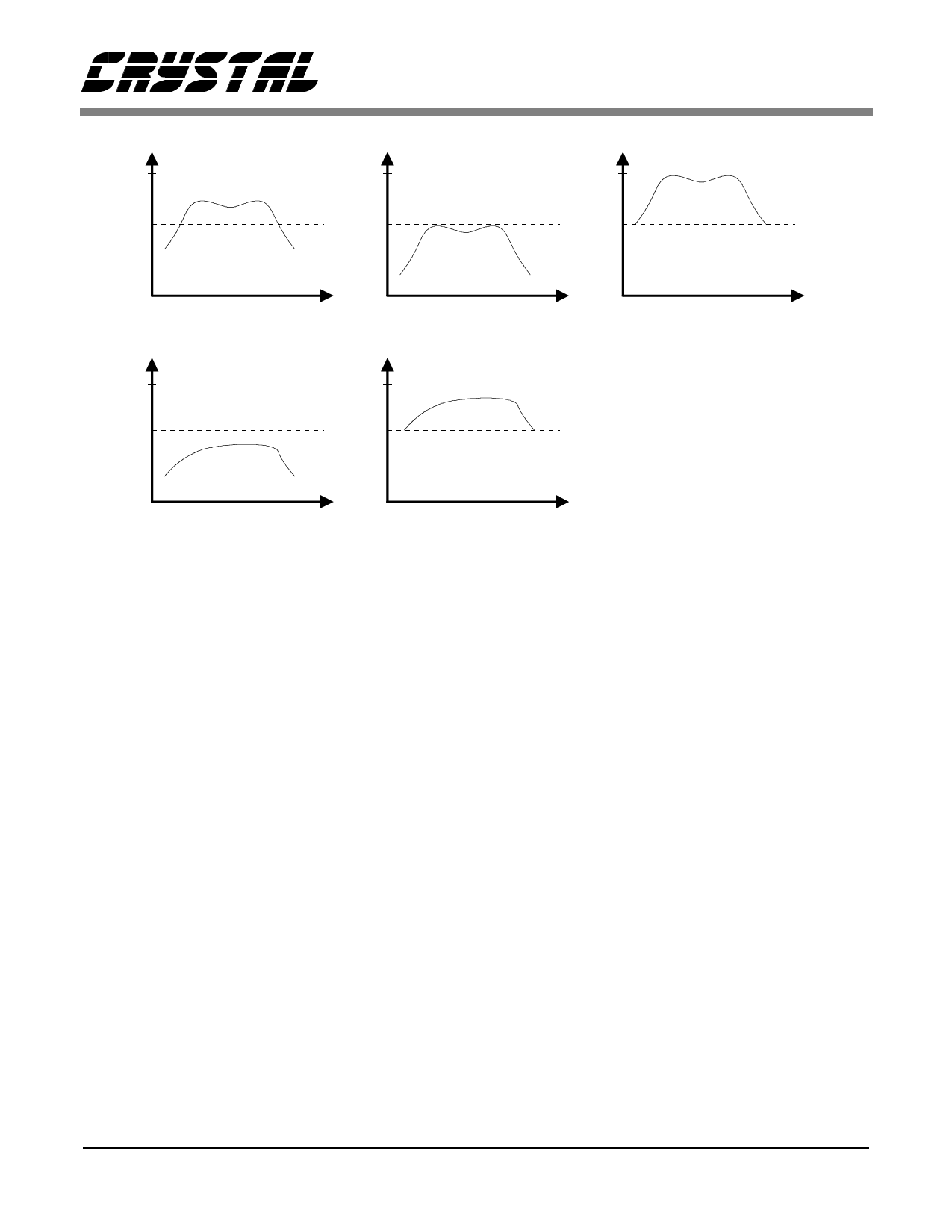CDB6420 Просмотр технического описания (PDF) - Cirrus Logic
Номер в каталоге
Компоненты Описание
Список матч
CDB6420 Datasheet PDF : 52 Pages
| |||

Fs
0dB
-30dB
Fs
0dB
-30dB
Fs
0dB
-30dB
CS6420
Fs
0dB
-30dB
(a) Input Signal
t
(b) AGC Attenuation
t
Fs
0dB
-30dB
(c) AGC Gain
t
(d) Input Signal
t
(e) AGC Gain
t
Figure 9. How AGC works (TVol = 00000)
transmit channel will engage extra attenuation
whenever only the far-end talker is speaking. How-
ever, if the near-end talker starts speaking, the at-
tenuation is removed and the system relies on the
near-end talker’s speech to mask residual echo.
Suppression causes some modulation of the per-
ceived background noise which may be distracting
to some users. As a result, it may be desirable to
limit the suppression attenuation to the minimum
necessary. The CS6420 provides TSAtt (Register
3, bits 9 and 8) to control the amount of attenuation
introduced by suppression in the transmit channel.
Receive suppression attenuates by 24 dB.
The suppression in the transmit suppression and
that in the receive direction work very differently.
The transmit suppression works in a “default off”
mode while the receive suppression is “default on.”
Transmit Suppression
The transmit suppressor attenuates the transmit
path when only far-end speech is present, hence the
name “default off.” This ensures that the suppres-
sion engages only when necessary.
Recall that the purpose of Transmit Suppression is
to mask residual echo by inserting additional
loss/attenuation in the transmit path in the scenario
when only far-end speech is present; the residual
echo, if any, in double-talk being masked by near-
end speech assuming reasonable levels of ERLE.
There are two controls/tweekable parameters for
governing the behavior of Transmit Suppression.
The two controls are adjustable through the Micro-
controller Interface, and they are TSThd (Register
3, bits 5 and 4) and TSBias (Register 3, bits 7 and
6). TSThd is the primary control and should be ad-
justed before changing the value of TSBias from its
default setting. TSThd sets the ERLE expectation
to be used in discriminating between near-end
speech and far-end echo. This control setting will
by far predominate in affecting the manner in
which Transmit Suppression behaves.
TSBias is a secondary control. This is to be adjust-
ed after the system designer is more or less satisfied
with the behavior of Transmit Suppression with the
TSThd set. It affects the ease with which a near-end
talker may disengage Transmit Suppression and
26
DS205PP2